9th of July. Area Krasny Yar
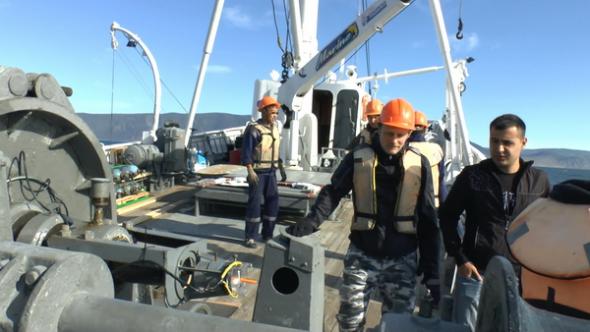
Krasny Yar is a cape between the Peschanaya lagoon and the river Buguldejka. There are outcrops of red color that can be seen from the middle of Baikal Lake. One of the research area of our expedition is located in front of this cape and, in accordance with traditions, is also called “Area Krasny Yar”.
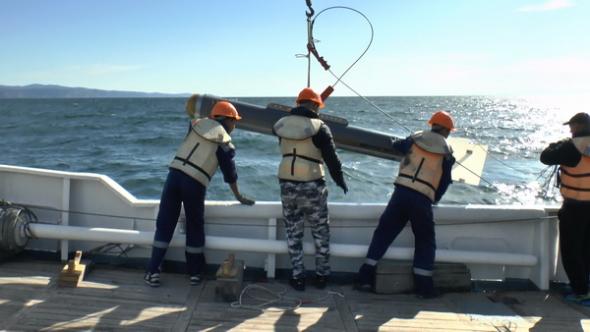
Many years ago hydrophysics discovered gas in water in this area. Further geologic and geophysical studies of different years with side-scan sonar (SSS) showed that there are numerous anomalous backscatter zones at the slope of Selenga river avandelta. Initially these anomalies were interpreted as more coarse-grained deposits which are indeed quite common at slopes. The discovery of gas-hydrates at larger structures on the bottom of the lake attracted the attention of geologists for a few years. During the period of these significant discoveries the area Krasny Yar remained “in shadow”. But researchers never forgot about this area and soon they returned there. Geologists performed bottom sampling and were surprised to find gas hydrates there as well. Hydrates were found just within the contours of the anomalies that were mapped during SSS survey a few years ago. Further studies showed that hydrates are formed exceptionally within this contour and, most probably, they are the reason for acoustic anomalies of bottom sediments that occur on SSS profiles. So the idea came to monitor the development of these anomalous gas-hydrate zones always when it’s possible. Up to the moment such monitoring has been performed for 3 years. Today the project Class@Baikal took part in realization of this wonderful idea and continued to improve the state of exploration of this area.
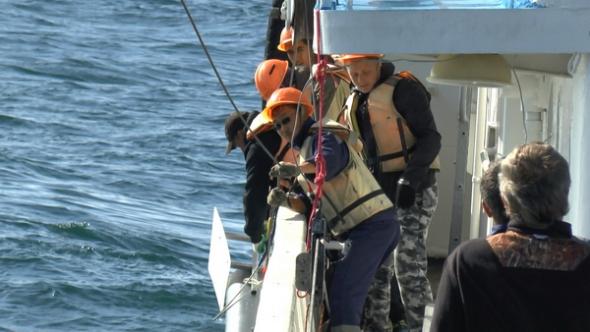
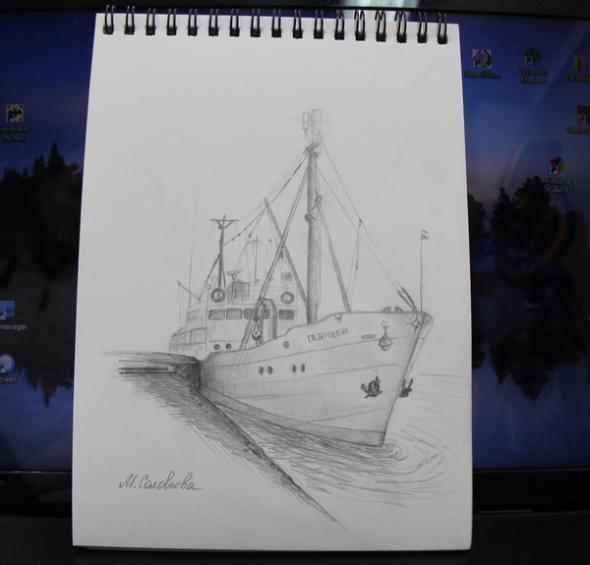
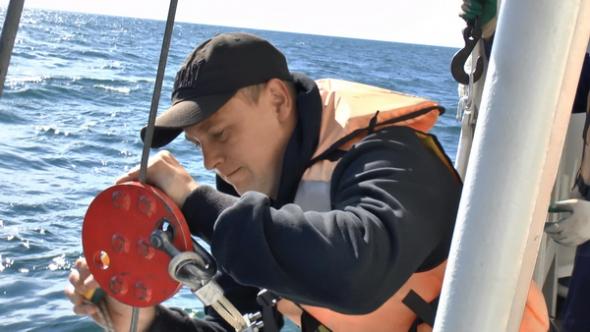
Night transition to the research area finished at 8 a.m. approximately. The so called “fish” – outboard part of SSS with source and receiver antennas of acoustic signal – was lodged. When weather conditions were fine two parallel profiles with a cross-section were conducted to acquire SSS mosaic. Our “old friends” were at their expected location. Gas “flare” in water is still very active. At least for this year the monitoring objectives have been accomplished. Moreover, between the SSS profiles a test profiler line has been conducted. In geoacoustic lab the leader of the research group from LIN SB RAS Aleksander Chensky gave a very interesting lecture on specifics of SSS and profiler surveys during geological expeditions.
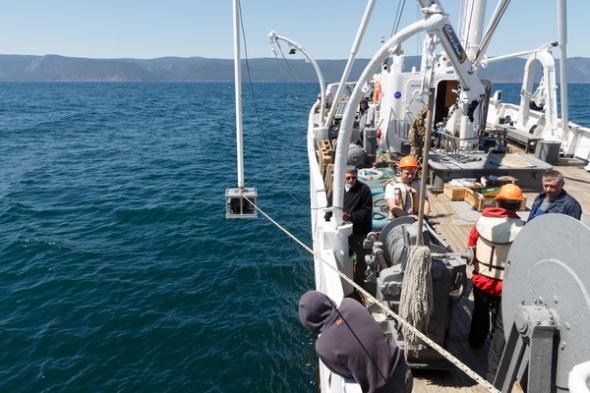
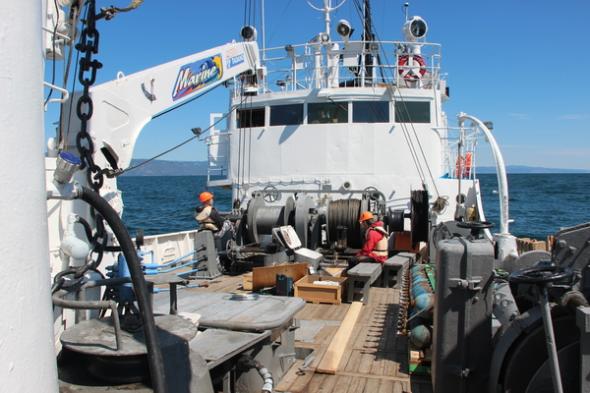
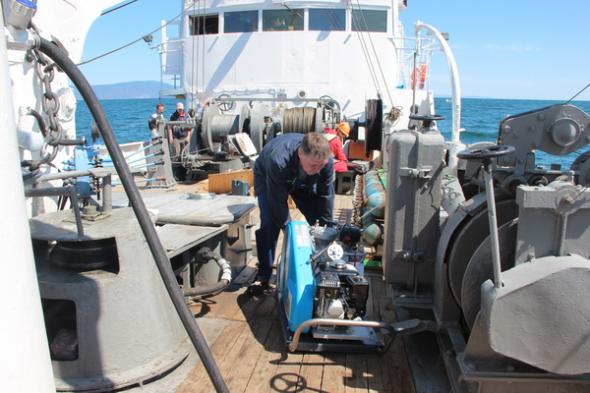
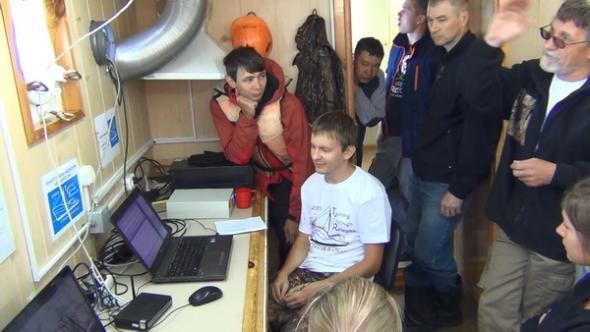
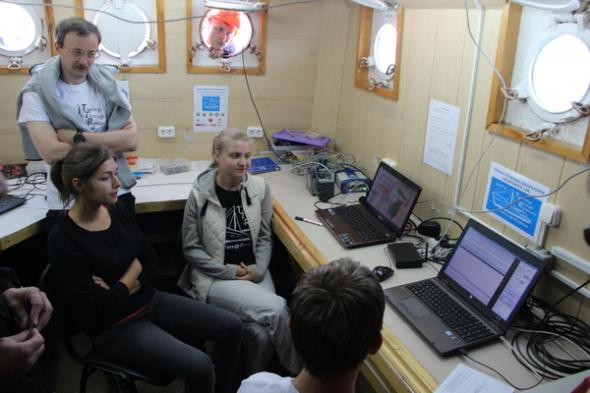
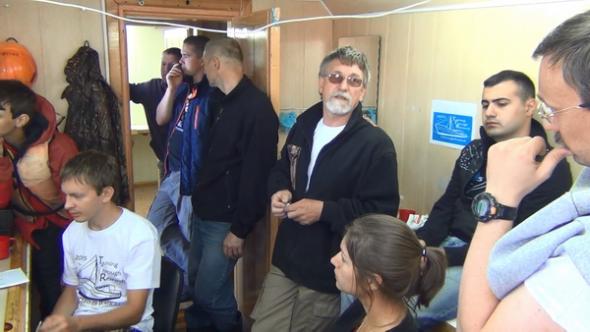
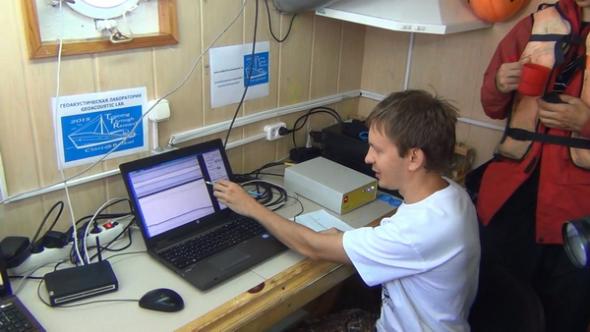
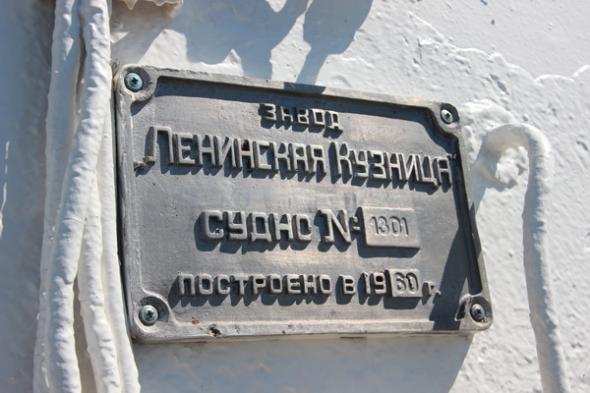
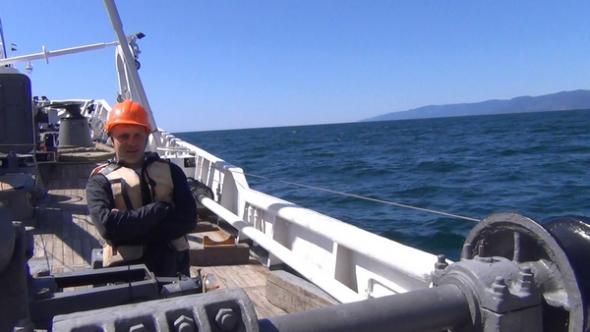
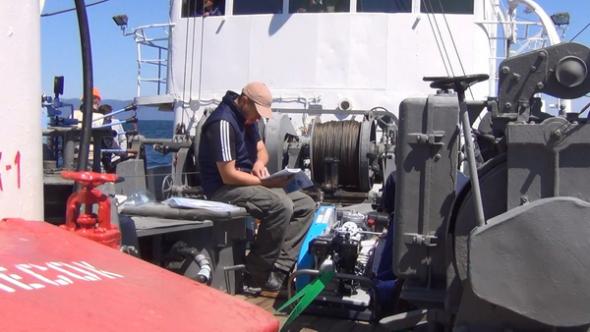
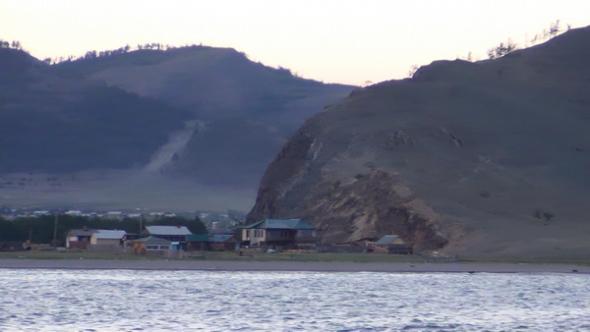
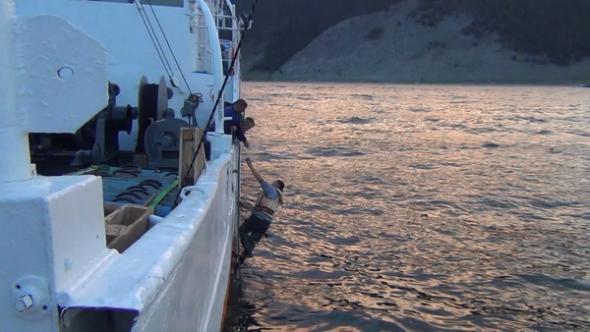
After 5 o’clock tea wind started to blow up and it became wavy. We had to leave the research area and hide from the storm in the small lagoon near the Buguldejka river. The forecast predicts the improvement of weather tomorrow so we promise to finish the investigations of Krasny Yar. It’s supposed that near the gas seeps and gas-hydrate fields up to the slope there is a landslide, which we’re planning to map by means of sonar.
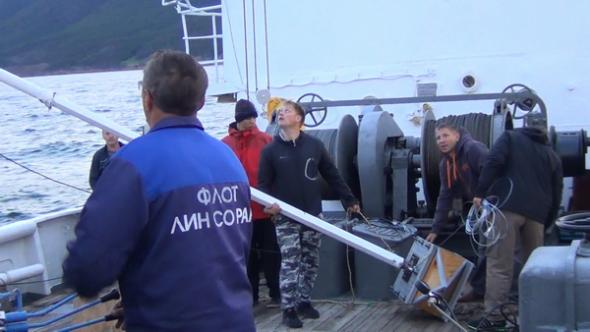
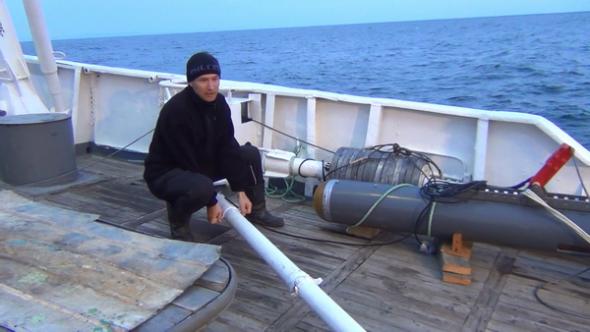
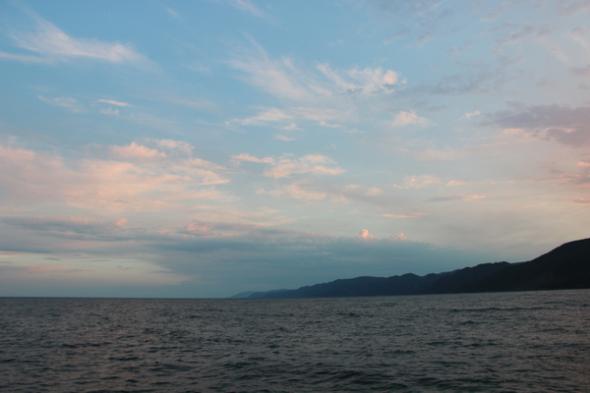
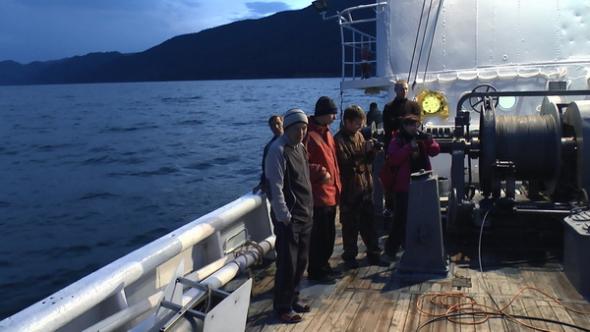
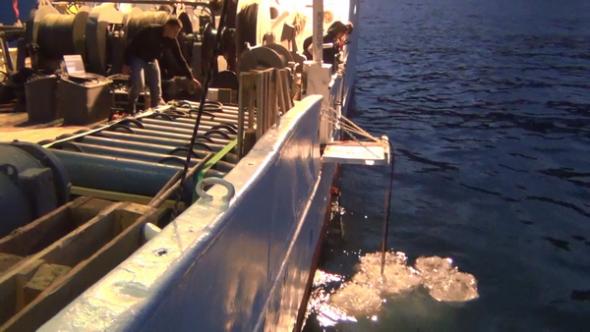
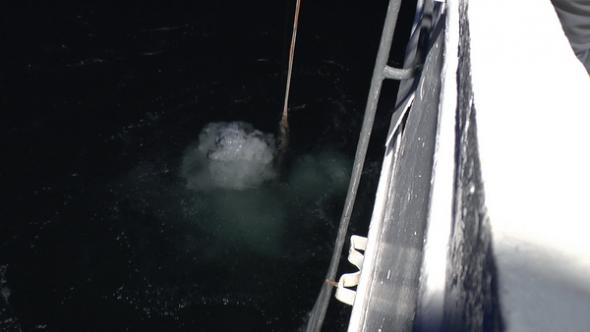
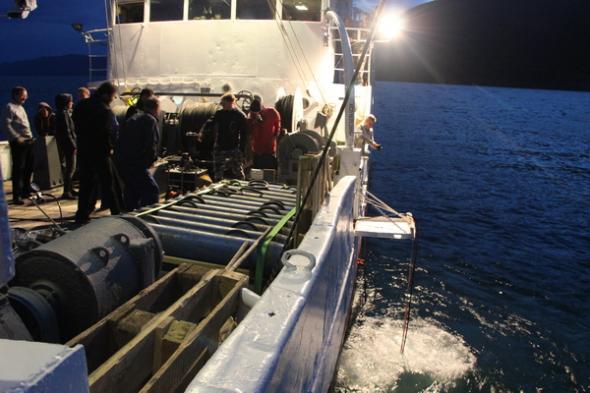
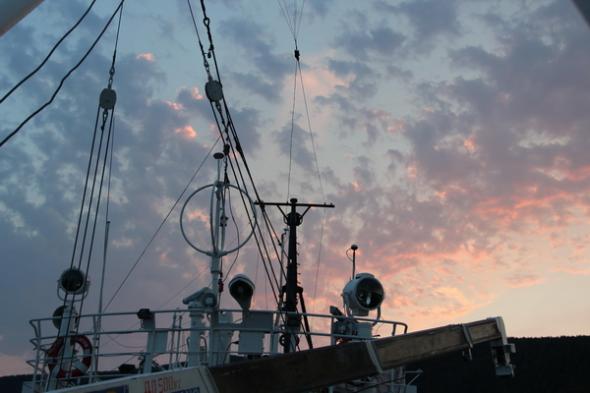
Lecture: Alexandr Chensky, «Hydro-acoustic systems for exploration and monitoring of gas hydrates»